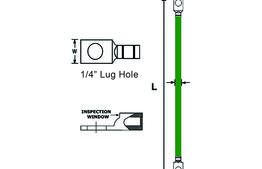Grounding and Bonding
Snap Track Cable Tray Can be used as an Equipment Ground Conductor (EGC)
Snap Track cable tray is UL Classified, marked with the available minimum cross sectional area and meets all requirements for use as an Equipment Ground Conductor per NEC Article 392.60.
Standard Snap Track splices, tee’s, crosses, and elbows are also UL Classified as an EGC component and are bonded per NEMA VE1 clause 5.1.2. Standard Snap Track splices, tees, crosses and elbows do not require bonding jumpers. However it is recommended that bonding jumpers be installed with adjustable fittings and splices when they are used as expansion plates.
Metal cable trays must be grounded and an electrically continuous system per NEC Article 392.
The ground network consists of all metal parts of a building connected together: beams, conduits, cable trays, metal frames or devices, all parts which must be connected together to guarantee the equipotentiality of the ground network.
Installations Requiring a Separate Equipment Grounding Conductor
Per the minimum cross sectional area requirements of NEC 392.60, table 392.60 (A), 4” and 6” Snap Track tray can be used as an EGC for circuits not exceeding 1000 ampere. While Snap Track 2” tray can be used as an EGC for circuits not exceeding 600 ampere.
A separate equipment ground conductor is required for any circuits exceeding these limits.
A bare copper EGC should not be used with Snap Track aluminum tray NOTE- NEMA Article 392.6 clearly states that a cable tray system must be electrically continuous but does not have to be mechanically continuous. Gaps between sections are restricted to 1.8m (6 ft). Cables must be secured to the cable tray prior to and after the transition, and protected by guarding or location. The electrical connection between sections can be maintained with bonding jumpers or a ground wire.
Snap Track angle can be used as a guard for an EGC or other cable when used with bonding jumpers or separate grounding clamps. This can increase the efficiency of the cable tray system at awkward intersections.
* See installation restrictions in NEC Article 250.

